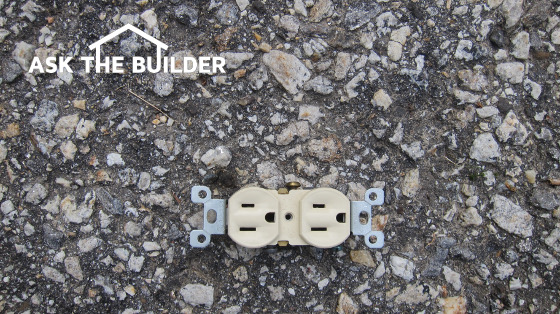Blacktop Driveway Types

This blacktop is seventeen years old and in very good condition. It’s got larger pieces of stone about the size of large grapes. That’s one reason it’s doing so well. (C) Copyright 2017 Tim Carter
Types of Blacktop Driveways
DEAR TIM: We need to have a new blacktop driveway installed and I thought it was going to be a simple process of comparing quotes. It turns out it’s somewhat confusing. I didn’t know there were different types of blacktop. What’s more, the contractors don’t seem to agree on the best way to prevent cracks along the edge of the driveway. Can you explain why there are different types of blacktop and what might be the best for my situation? Do you have a blacktop drive and what’s it like? Maddie H., Baltimore, MD
DEAR MADDIE: I do have a blacktop driveway at my current home. Prior to that I had a very unique driveway that was the first cousin to blacktop. It was a driveway made with just the liquid asphalt cement and small stone chips. Some call it seal chip and others call it tar and chip. Blacktop is almost always an asphaltic concrete made from liquid asphalt cement, sand and gravel.
If you know much about sand and gravel, then you can start to get your head around how there can be different types of blacktop. The reason there are different blacktop types is because there’s an infinite amount of possible combinations when you consider the different sizes and shapes and colors of sand and gravel.
Highway engineers have a much better handle on this than folks like you and me because they have to construct roadways from asphalt that support heavy trucks. The blacktop mixtures used on an Interstate highway may be just fine for some residential driveways but you’d have to take a number of things into consideration.
For example, let’s talk about my driveway. I live in central New Hampshire and we get lots of snow and ice in the winter. Many driveways here where are not flat. You need excellent traction in both wet and snowy weather.
Fortunately the contractor who installed my driveway before I bought this home used a special mix that has smaller and larger pieces of crushed granite in the mix. The majority of the largest pieces of stone in my driveway are about the size of a large grape. There is an occasional piece of stone that’s about the size of my big toe!
These stones in the mix are by no means smooth. The roughest edges are knocked down, but the stones have a marvelous gripping texture. Over time the smaller pieces of sand and asphalt have eroded between the stones a slight amount. This produces a rougher surface that provides exceptional traction in wet or snowy weather.
But you may want a satin smooth blacktop drive for your mild climate. Many homeowners love smooth-as-silk blacktop. If you’re installing a new driveway and you intend to be at the house for many years, you may want to consider talking to your contractor about installing two separate layers of blacktop to create a driveway that could last decades and decades.
Keep in mind that the gravel base under the blacktop is where the drive gets almost all its strength. You want at least 8 inches of crushed compacted gravel under the blacktop.
You have the option to install one 2-inch layer of blacktop like I have on top of the gravel base. He then would order a different batch of blacktop that only had small stones in it no larger than 3/8 inch in size. He’d put a 1-inch layer of this on top of the first 2 inches. When these smaller stones are combined with medium and some coarse sand in the mix, the final surface after it’s rolled is just about as smooth as you could imagine.
It’s very important for you to see the different types of blacktop that your contractors are proposing. Have them give you addresses of jobs you can go visit. Walk around and look at the finish and the size of the stones you can see in the mix. Decide which one you like best and be sure to have the contractor match it.
To prevent cracking of the blacktop on the edges of the drive, you need to do something most residential contractors never do. The crushed gravel rock base under the driveway needs to be at least 1 foot wider than the actual finished driveway if you want to eliminate cracks.
Most driveway contractors install the gravel base, compact it and then put the blacktop all the way to the edges the gravel. The soil on the sides of the driveway that’s added after the job is done offers no structural strength to a sideways movement. When a heavy vehicle tire is right at the edge of the driveway, the force not only goes down but some of the force also goes sideways.
When the soil can’t oppose this force, the blacktop cracks away. A wider compacted gravel base will provide all the needed support. Roads out in the country have this extended base. You’ll often see wide gravel shoulders on country roads. These are there to keep the pavement in great shape.
To have the best protection against edge cracks the gravel base or shoulder should extend to the same height as the asphalt. Most homeowners would never put up with this look as they want the grass to touch the blacktop. You can put in an attractive edging stone as a compromise. Talk to your contractor and see what thoughts he has.
4 Responses to Blacktop Driveway Types